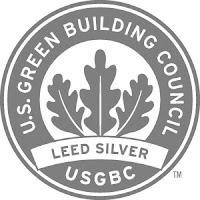22 Apr It?s Not Easy Being Green: The Benefits and (Soft) Costs of LEED Certification
When approaching a rehabilitation project, project planners inevitably ask: will it be green? Often this question is actually asking: will the project be LEED certified? While the Leadership in Energy and Environmental Design program is based on well thought out principals, LEED certification requires more time, paperwork and money for both designers and contractors. Historic Boston is pursuing LEED silver certification for the Eustis Street Fire House project where we are witnessing firsthand the advantages and challenges of the program.
For a non-profit mission oriented organization like HBI, the expenses related to LEED are worth scrutinizing. The soft costs relating to LEED documentation typically add 3-5% to a construction project?s total development costs through time consuming planning and paperwork for architects and contractors. They must model energy usage and calculate ?green points? that they hope the project will achieve during project planning, and then they must track products and reporting methods of delivery through documents provided by the United States Green Building Council (USGBC).
With preservation projects such as the Fire House, costs are particularly unpredictable because of the uncertainty of what will be found when we peel back layers of the building?s structural development. Already paying for resulting change orders stemming from this unpredictability, LEED documentation costs can make for a prohibitively expensive preservation project. At the Fire House, a small 2,520 square foot structure, costs related to LEED documentation are $35,000 (just for fees alone, and not including actual green building techniques or products). These costs raise the questions: If HBI can restore a structure and achieve the baseline LEED certifiable (but not certified) standards, and save tens of thousands of dollars through not undertaking LEED documentation, why complete an expensive certification process for no additional environmental benefit? Since LEED is an independent organization that created its own standards, is the program too nascent or arbitrary? Is it worth $35,000 of precious preservation project funds?
We?ve concluded that, despite cost limitations, there are significant benefits to pursuing LEED certification that help override costs. Full certification forces us to adhere to strict standards so that we won?t compromise environmentally sustainable building materials and standards during construction and under the duress of change orders. LEED is also useful for allowing us to demonstrate our organizational values. HBI, by certifying our commitment to LEED standards at the Fire House is asserting our commitment to linking green building practices to the already sustainable practice of adaptive reuse through historic preservation.
The problems of LEED, especially compliance costs, continue to improve as building to LEED standards becomes more popular and USGBC continues to update its point system. Not alone in our undertaking, another adaptive reuse historic fire house project, Zumix in East Boston, was recently awarded LEED gold certification. If a greater number of projects take on the LEED certification process, then experienced practitioners will continue to develop and contractors will continue to find more affordable suppliers?a process resulting in the reduction of prices for green preservation building projects.
This blog post, prepared by intern Peter Erhartic, honors Earth Day 2011. Peter was recently accepted to the University of Pennsylvania?s graduate program in historic preservation. Peter plans to focus on preservation-based real estate development.




